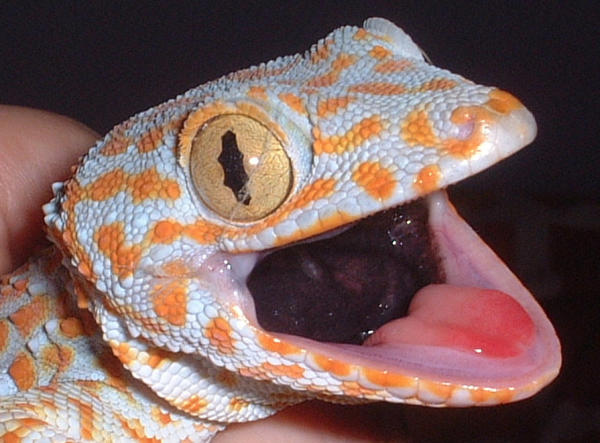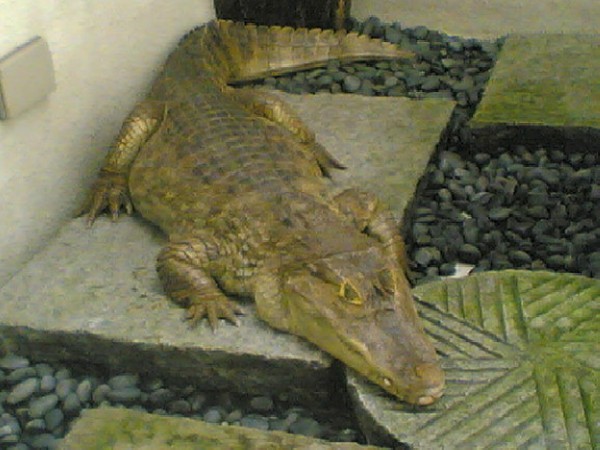|
The Worst Reptiles for Beginning Hobbyistsby Petra Spiess

The Tokay Gecko There are few other reptile species of any genera more aggressive than the tokay gecko. This species is very common on the market, and is subsequently very low priced. Most tokays are imported animals and have all the problems that go with this process. Tokay geckos, with very few exceptions, do not become docile and do not tolerate handling well. In addition, they are extremely quick and, as with all arboreal geckos, can climb even slick surfaces with ease. The first thing a tokay geckos does when it feels threatened (which seems to be anytime anything comes near one) is to gape its prodigious mouth as a warning, which is why most close photographs of the tokay geckos show the animal in this position. The second course of action for a threatened tokay is a load barking noise followed by a lunge at the threatening object (if you are keeping one, this is usually your hand). The last course of action is biting, and boy, can they bite! Tokay geckos have very strong jaws, capable of causing serious injury to anyone fool enough to be bitten by one of these animals. This beautiful and interesting gecko can make a good captive for those who are experienced in handling aggressive, fast moving reptile species. Beginners generally do not fall into this category, so should pass this species by when looking for a new purchase.

Caimans or Alligators There are many reasons not to keep these two species, among them is the fact that many states ban the private sector from owning these animals. Baby alligators are produced heavily in the East and South, a determined person will be able to purchase one, legal or not. Caimans can be found in almost every state that does not ban their sale. Baby caimans and baby alligators are undeniable cute, they make cute sounds, and are extremely soft to the touch. Most people who purchase these animals as babies have never seen an adult animal or do not plan on caring for the animal for its entire life. I will never forget speaking with a person who had just purchased a baby alligator and asking, "What will you do with this animal when it gets anywhere near the adult size?" The answer I received was, "I Dunno know", which is the typical response of a person who purchases one of these completely inappropriate reptiles. Many alligators purchased by people such as this die or are killed long before they reach an "inconvenient" size. Alligators are extremely unsuitable to just about all reptile keepers, experienced or not. Their huge size, demanding housing and feeding requirements, and aggressive nature makes this species one of the worst reptile species to maintain in captivity. Caimans are much smaller than alligators, but size is relative considering alligators are beyond HUGE. Caimans are also aggressive, and require very large aquatic enclosures most people cannot provide.
With so many reptile choices on the market today, it is sometimes difficult for a beginning hobbyist to choose an appropriate reptile pet. There are many reptile species that are wonderful for beginners, but there are many commonly available and cheap species that are not. It is important that beginning hobbyists have good experiences with the reptiles they choose to purchase, as this encourages them to become more involved in a fascinating hobby that will last a lifetime. < BACK |